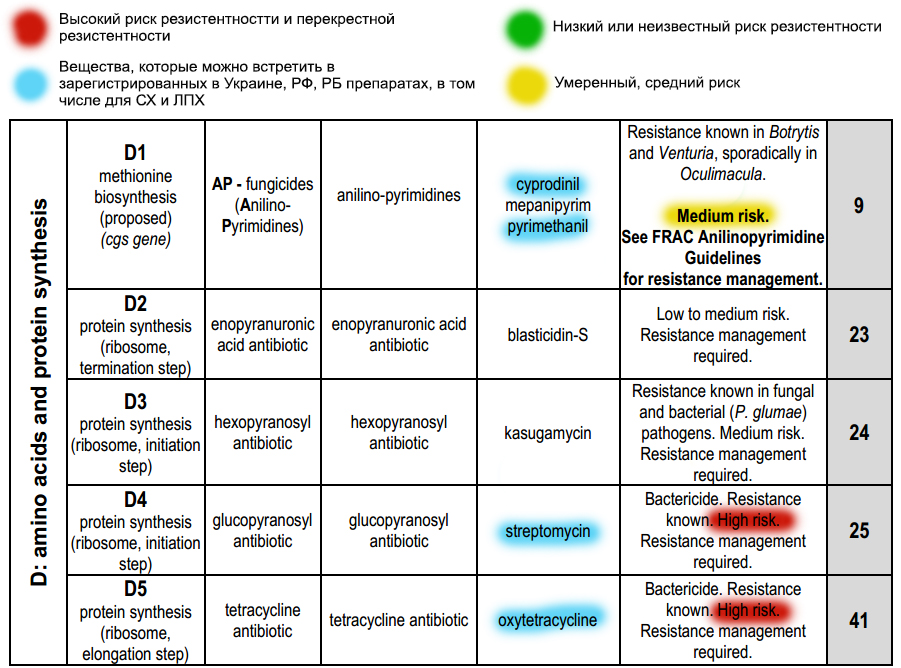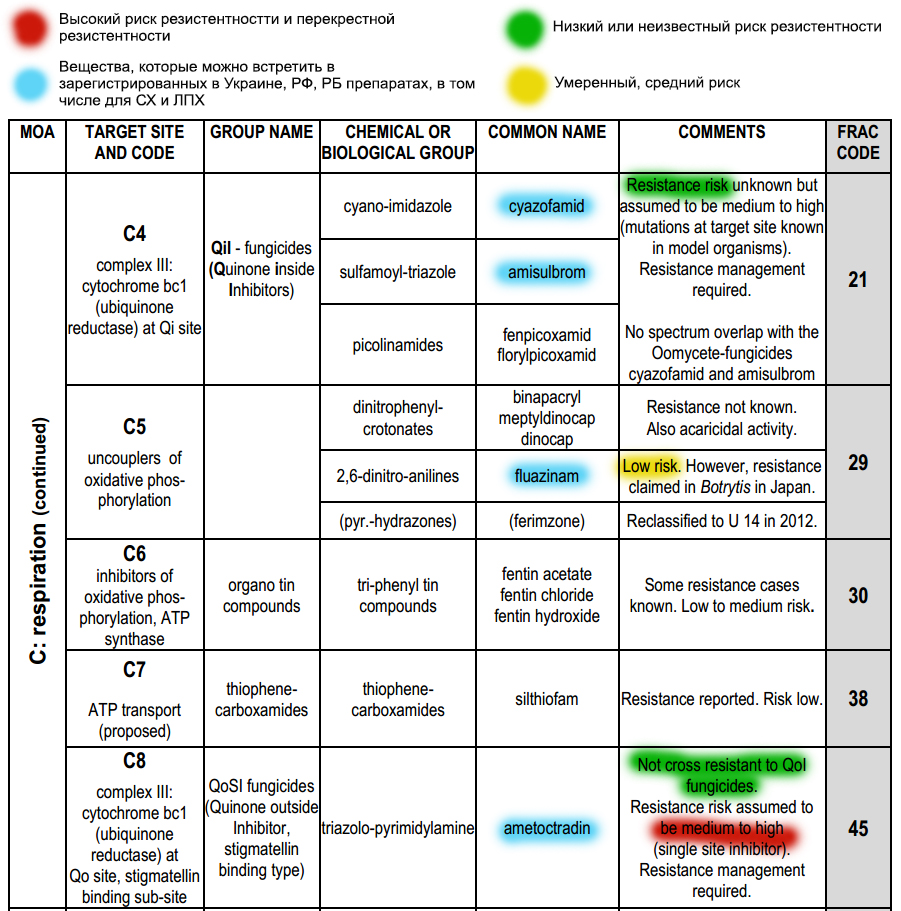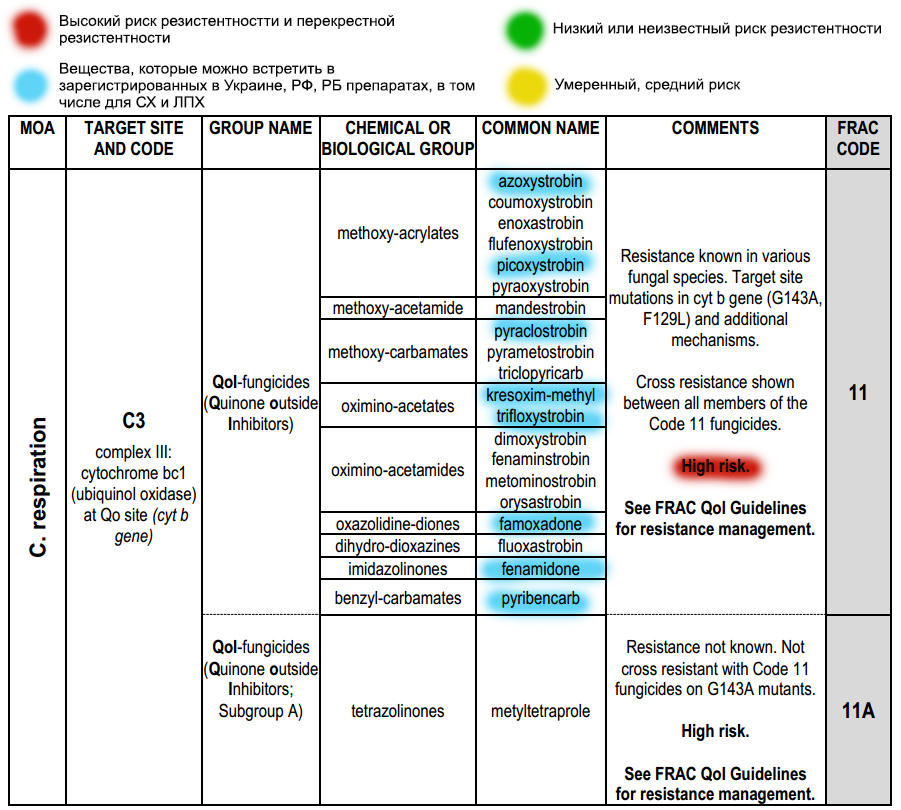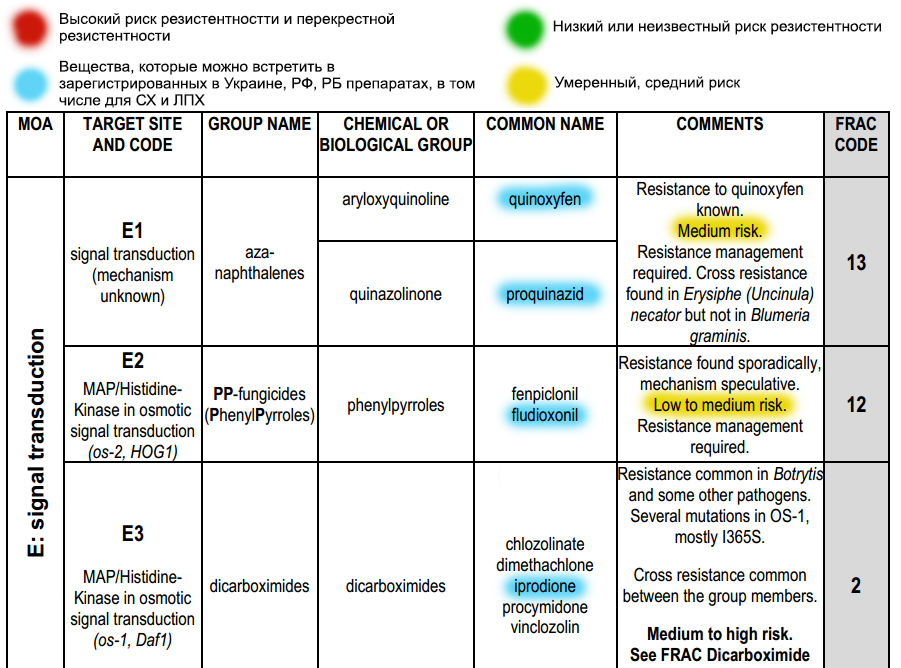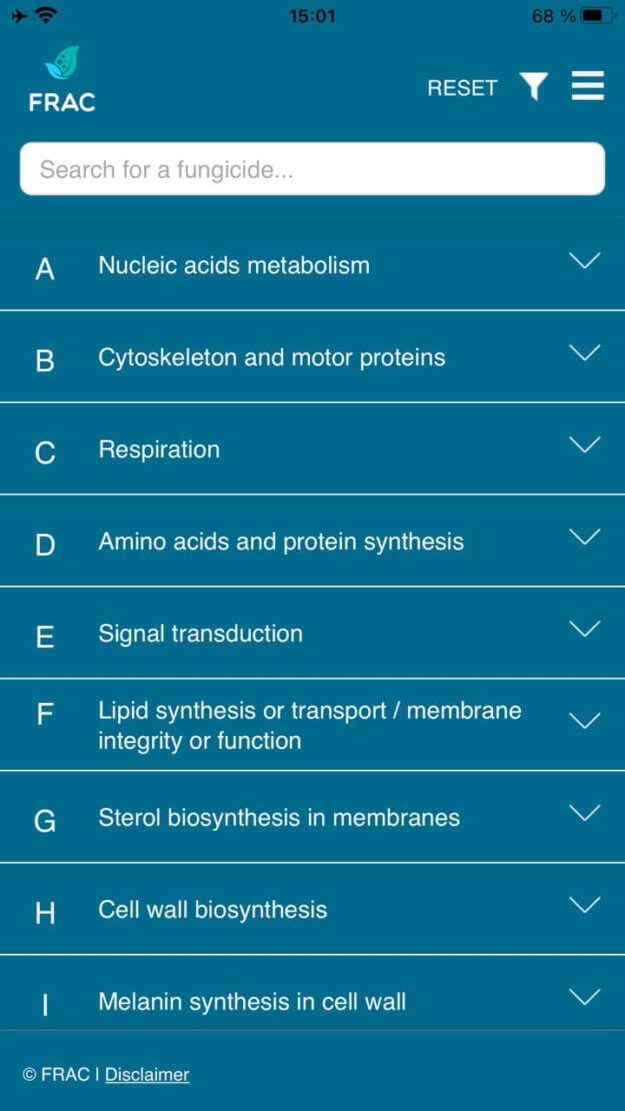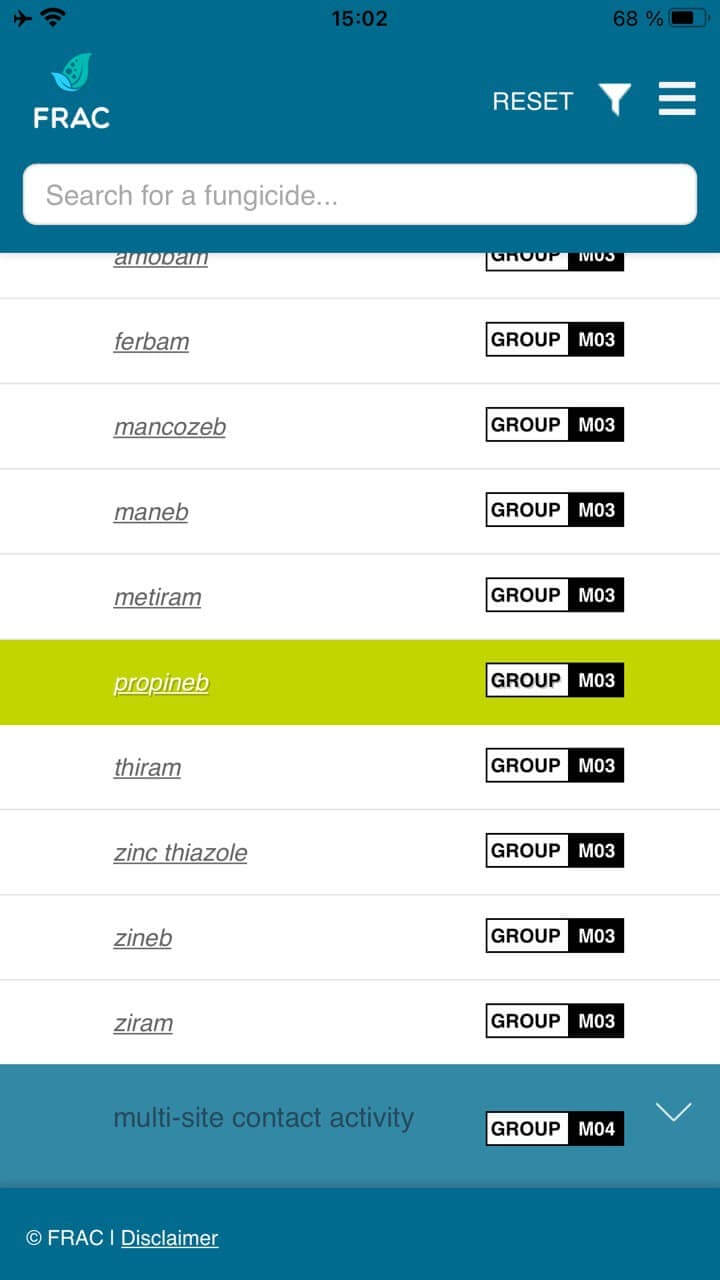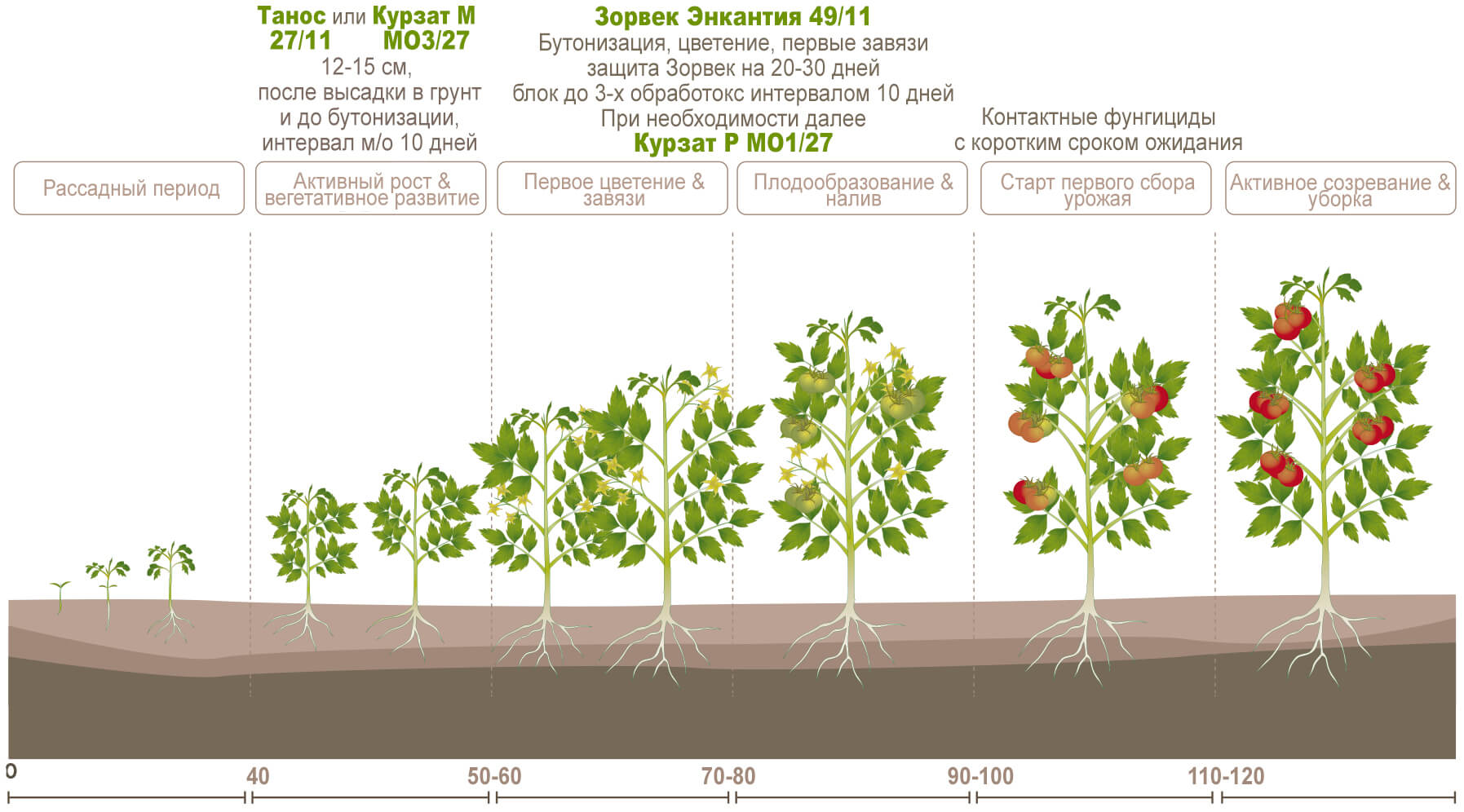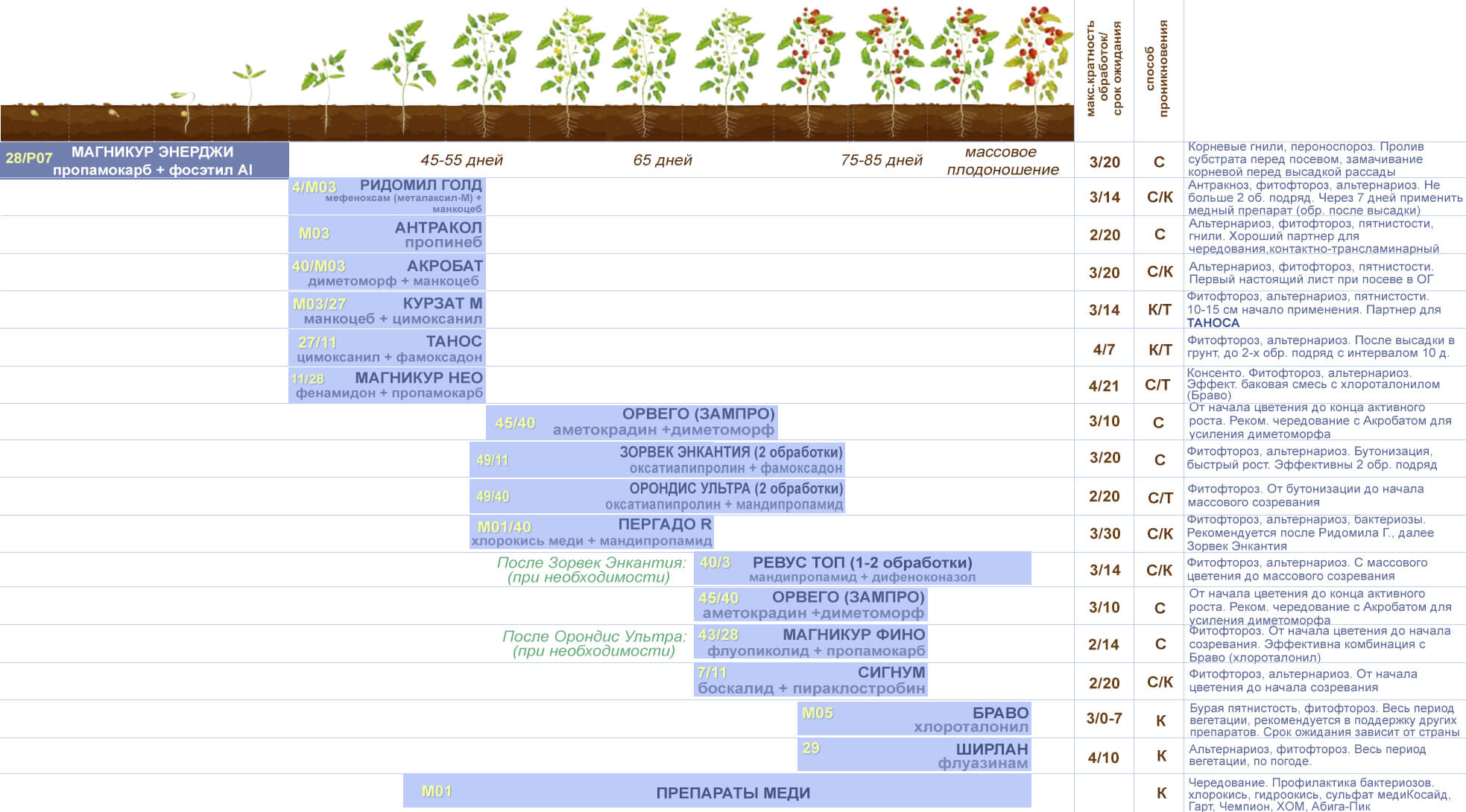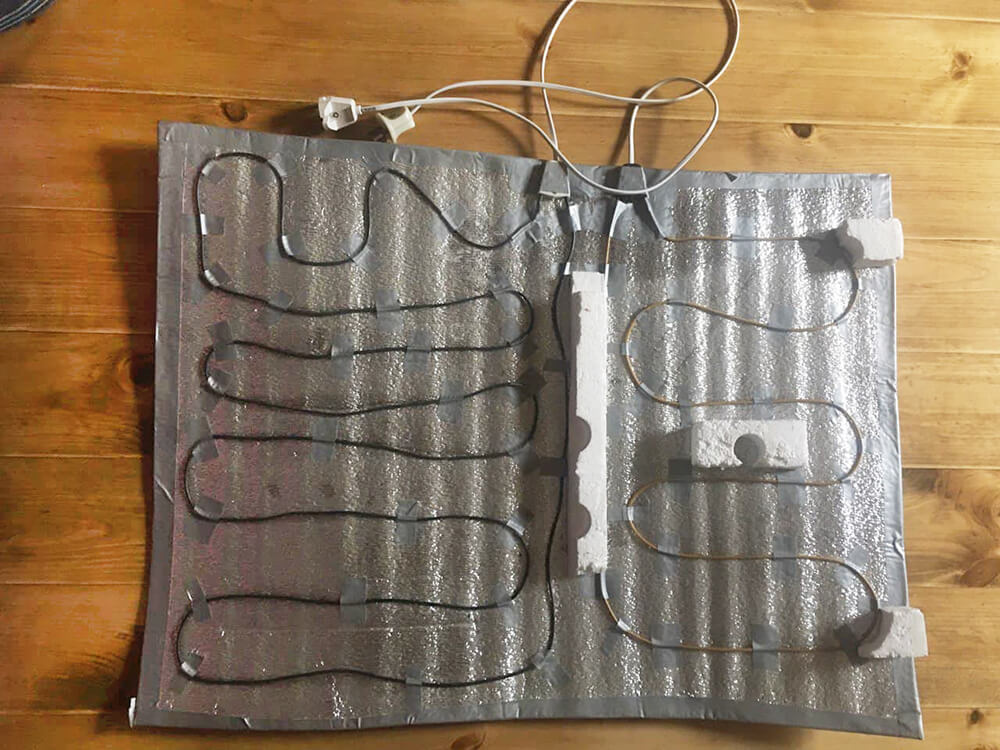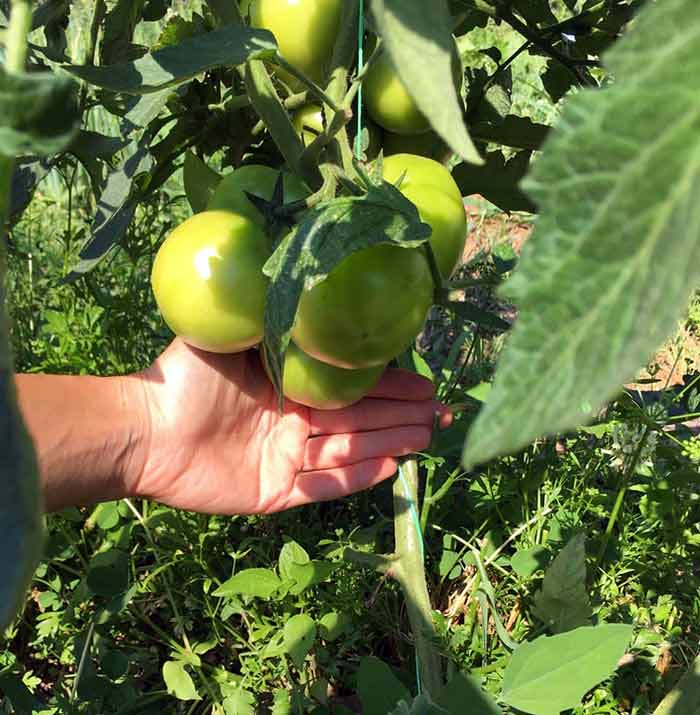While preparing material on plant disease treatment systems, I discovered a tool that allows you to create treatment plans without being tied to products from one manufacturer. You’ll confidently combine them and make tank mixtures like a pro. This tool is called FRAC codes.
The Fungicide Resistance Action Committee (FRAC) has developed an alphanumeric coding system assigned to pesticides based on several parameters: grouping by the substance’s action on the disease, chemical origin, substance name, and cross-resistance coding.
For example, Group C includes inhibitors of cellular respiration. It contains pyrimidines, quinazolines, strobilurins, and others. Substances in this group are assigned codes like 39, 7, 11, 11A, etc. Azoxystrobin from Quadris in the FRAC code system is designated as C3/11, where C3 is a subgroup based on its targeted impact on the pathogen (C3 complex III: cytochrome bc1 (ubiquinol oxidase) at Qo site (cyt bgene)), and 11 refers to the cross-resistance code. Under code 11 and subgroup C3, we also find another popular product, Strobi (kresoxim-methyl).
FRAC codes are used worldwide, but I couldn’t find a Russian-language catalog; I use the original one in English. I’m sharing a Ukrainian version with substances registered locally, as well as the English version.
Below is the international version with my annotations for easier usage.
FRAC also offers an app, which you can find via the link above on their official website. Enter the substance’s name into the search bar, and you’ll get all the data.
Screenshots from the app:
You don’t need to memorize all the groups and codes; they stick over time if you periodically work with reference material. While preparing this guide and making tables with protection plans, I memorized most numerical codes without the groups — and that’s enough for reasonably effective product combinations.
How to Create a Treatment Plan for Any Plant Using FRAC Codes
First, study the protection strategies used by leading companies. It’s not a difficult task if you can find everything in one place (I’ve compiled a selection for tomatoes and plan to create more).
As an example, let’s take DuPont’s recommendations for tomatoes and try to understand their “logic.” They suggest 4–5 products per season: Tanos, Kurzat M, Zorvec Encantia, and Kurzat R.
Study the information on each product: active ingredients, mode of dispersion in the plant (contact, systemic, etc.), waiting periods, intervals, and the number of treatments.
| Trade Name | Active Ingredients | Mode of Dispersion in Plant | SO/KO | Pathogens | FRAC Code |
|---|---|---|---|---|---|
| Tanos | Cymoxanil, Famoxadone | Contact-translaminar | 7/4 | Phomopsis, Phomosis, Alternaria, Septoria, Late Blight — those starting during the early phase (6–8 leaves) | U/27+C3/11 |
| Kurzat M | Cymoxanil, Mancozeb | Contact-translaminar | 14/3 | Tanos application points | U/27+M03 |
| Zorvek Encantia | Oxathiapiprolin, Famoxadone | Systemic-contact | 20/3 | Late blight, alternariosis, downy mildew | F9/49+C3/11 |
| Kurzat R (Ordan) | Copper oxychloride, cymoxanil | Systemic-contact | Late blight, downy mildew, bacterial diseases | М01+U27 |
1st Treatment. It’s known that at the beginning of the vegetative season, seedlings need to be protected from root rot (black leg). DuPont doesn’t offer us anything for this issue, but other manufacturers do have an excellent Previcur Energy (propamocarb + fosetyl-aluminum F4/28+P07), as well as products based on Bacillus subtilis, Trichoderma, Alirin, Gamair, Planriz, Gliocladin, etc.
2nd-3rd Treatment can occur either before transplanting seedlings to the ground or immediately afterward. The main targets are rots, powdery mildew, and early alternariosis, which start affecting plants during the seedling phase, with the first signs appearing by the end of flowering. These diseases develop under conditions of high humidity, lack of sunlight, and temperatures up to 20 degrees Celsius. At this growth stage, it is crucial to minimize Alternaria solani spore formation and protect new growth — this is where Thanos and Kurzat M excel. It’s recommended to perform two consecutive treatments before moving on to the next stage of protection. I should note that at the very beginning of the vegetative season, products with the longest pre-harvest interval can be used — such as Antracol, Acrobat, and Infinito (Magnicur Neo).
4th-5th Treatment. During the budding, flowering, and initial fruit set stages, it is time to protect tomatoes from late blight. The leaf mass is still growing, which means new growth needs protection. Zorvek Encantia does not overlap with previously used products in terms of chemical composition and cross-resistance risk. It provides new growth protection, multiple modes of action on pathogens, and is one of the best products currently available.
6th Treatment. If there is a high risk of mass late blight infection, a copper-based product like Kurzat R (Ordan) is applied. It has anti-sporulation and bactericidal properties, both treating and preventing diseases. М01+U27 does not overlap with previous treatments, and it also has a relatively short pre-harvest interval.
During the period of mass fruiting, fungicides with contact action are needed — they do not penetrate the fruit and have a short pre-harvest interval. Products based on copper, chlorothalonil, and fluazinam are suitable for this purpose.
The outlined scheme can be considered a model one, allowing for the selection of protective agents according to this algorithm: at the beginning, use products with a long pre-harvest interval and complex action for 1-2 treatments. Then, focus on late blight with a product featuring a different FRAC code for 1-2 treatments. During fruiting, use substances with a short pre-harvest interval, contact action, and copper to control bacterial diseases and rots during storage. The active ingredients of the products and their codes should not overlap during alternating treatments.
A similar principle can be used to assemble a treatment scheme for any crop, provided you know which substances are recommended for their protection and treatment at specific vegetative stages.
In the upcoming season, I plan to refer to the Canadian document on plant protection. I’m making this document and several other relevant materials available in open access on Google Drive and Yandex.Disk .
Why is it important to know the code of the product you choose?
Let me give a simple example. There is a wide range of strobilurins on the market, such as azoxystrobin Quadris (С3/11) and kresoxim-methyl Strobi (С3/11). While their active ingredients have different names and their application descriptions seem nearly identical, it might appear logical to include them in rotation within your treatment scheme. However, knowing that these substances are fundamentally very similar and exhibit cross-resistance, we would select a different product, and that would be the correct decision.
Another caveat with strobilurins is that they can only be used season-by-season. That is, if you apply Quadris this season, you cannot use Strobi or Thanos (famoxadone С3/11) in the following season.
I understand that tens of thousands of my fellow citizens may not plant their seedlings on time in 2022. But the time will come when my efforts will surely be useful to them. While I can still publish helpful information, I will sit down and work.












